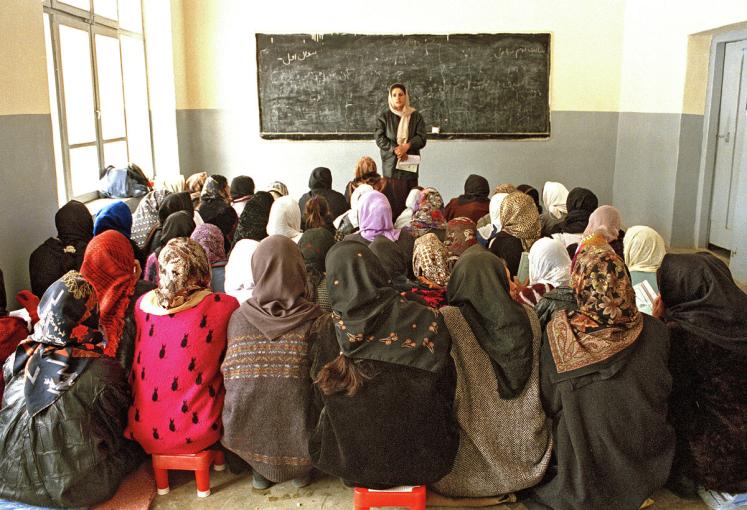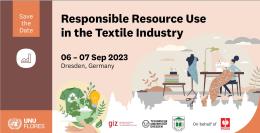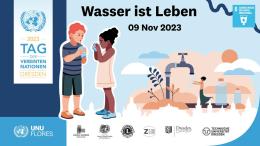SDG #16 represents the commitment of the international community to “Promote peaceful and inclusive societies for sustainable development, provide access to justice for all and build effective, accountable and inclusive institutions at all levels.” The goal’s ten targets include ambitious but fuzzy commitments to significantly reduce all forms of violence, end abuse and violence against children, promote the rule of law and equal access to justice, reduce illicit flows and corruption, and develop accountable and transparent institutions. The goal cements the link between development and peace and security, which had been seen as the “missing bottom” of the Millennium Development Goals (MDGs).
The draft outcome document of the UN Summit for the adoption of the post-2015 development agenda asserts that “there can be no sustainable development without peace and no peace without sustainable development,” pointing to the development-reversing effects of conflict. The 2011 World Development Report (WDR) estimated that “the average cost of civil war is equivalent to more than 30 years of GDP growth for a medium-size developing country” and that, in 2011, “on average, a country that experienced major violence over the period from 1981 to 2005 has a poverty rate 21 percentage points higher than a country that saw no violence.” More recently, the OECD found that nearly two-thirds of those countries now considered fragile are expected to fail to meet the MDG of halving poverty by the end of this year.
Moving away from politics
While the link between development and security is uncontested, inclusion of a goal on peaceful societies within the post-2015 development agenda was the subject of significant debate for two key reasons. First was the concern amongst some developing countries of a ‘securitization’ of development, following a Western agenda and opening the door for further donor-imposed conditionalities on development assistance linked to performance on governance and rule of law. The implications regarding the possible erosion of state sovereignty, as well as a potential confusion between the mandates of the UN Security Council and the UN Development System, led several middle-income countries (MICs) to oppose the formalization of this linkage. Perhaps unsurprisingly, given its high crime and homicide rates, Brazil resisted the inclusion of a goal around peace and security, claiming that violence is a purely domestic issue. Secondly, some middle-income countries may have been concerned that the inclusion of peace and security as key areas for action would divert Official Development Assistance (ODA) resources away from them and into fragile and conflict-affected low-income countries (LICs).
There is arguably a strong case to be made that an increasing share of ODA should shift to fragile LICs. One reason for this is that the geography of poverty is changing. In 1990, one-fifth of the global poor lived in fragile states. According to recent projections, approximately half of them now live in states affected by conflict and violence. This figure is likely to increase.
Also, fragile and conflict-affected LICs are already significantly underfunded. While it is true that ODA matters less and less in development as aid flows are increasingly dwarfed by Foreign Direct Investment, domestic resource mobilization, and remittances, fragile LICs continue to rely heavily on ODA, some of them depending on aid to cover up to 40% of government expenditures. Yet, there is a growing risk of fragile LICs being left behind as donors increasingly shift their aid allocation to successful MICs.
Addressing measurement and implementation challenges
One difficulty with Goal #16 is how to measure the stated targets. Targets like 16.3 or the development of “effective, accountable and transparent institutions” (Target 16.6) are not as easy to quantify as economic growth (Goal #8), maternal mortality (Goal #3), or access to water (Goal #6). Despite efforts from international organizations and civil society to provide a list of potential data sources and indicators for Goal #16, data is often lacking or of poor quality, especially in fragile and post-conflict countries. As a result, most of the targets are not quantified or time-bound, meaning that indicators will be more difficult to develop and monitor.
Further, many of the targets included in Goal #16 (such as the ones calling for reducing corruption and illicit financial and arms flows, recovering stolen assets, or combating organized crime) refer to illicit activities that are hidden by nature. Existing data sources (e.g. seizures or arrests) reflect the priorities of public authorities rather than an accurate picture of the scope and impact of these activities.
The Inter-agency and Expert Group on SDG Indicators, which has been tasked with developing a global indicator framework for the SDGs, will need to consider these issues. They should include solid quantitative measures but also not ignore the need for more and better qualitative assessments; address the capacities of governments to collect such information; include non-official data; and make use of evidence-based proxy indicators. Above all, and given the relatively short time frame, indicators should remain realistic and avoid “pointless increases in ambition.”
Measurement aside, the biggest challenge of Goal #16 will be one of implementation. Progress on this goal is all the more important in light of the growing concentration of the global poor in fragile countries. The fact that the progress achieved in poverty reduction in the last 20 years has been mainly in stable MICs suggests that achieving development in fragile and conflict-affected LICs will be an inherently more difficult and complex endeavor, calling for a whole new set of approaches and tools that integrate development and security. And building and strengthening institutions and practices of ‘good governance’ (target 16.a) will require significant time and resources. The 2011 WDR noted that, historically, it took even well-performing countries up to a generation to achieve basic governance transformations in the areas of bureaucratic quality, control of corruption, and the rule of law. Given the 15-year time horizon considered by the SDGs, only limited progress can therefore be expected. With only 4 percent of ODA to fragile states being currently allocated to legitimate politics, 3 percent to justice, and 1.4 percent to security, implementation of Goal #16 will also depend upon the international community finding ways to fill this important funding gap.
Goal #16 may now enshrine the link between peace and sustainable development, bringing focused attention to the needs of those in fragile and conflict-affected states; however, without attention to the problems around its implementation and measurement, it will remain nothing more than words on paper.
Suggested citation: Louise Bosetti, Hannah Cooper and Alexandra Ivanovic., "Turning Words into Action: Peaceful and Inclusive Societies in the SDGs," UNU-CPR (blog), 2015-09-25, https://unu.edu/cpr/blog-post/turning-words-action-peaceful-and-inclusive-societies-sdgs.




